First Edition of the "Most Important of all Overland Narratives"
"Definitive Account of the Most Important Exploration of the North American Continent" (Wagner-Camp)
The foundation stone of any serious collection of Western Americana, the first edition of the official account of the Lewis & Clark expedition. This book is universally lauded as the most important and influential work concerning the exploration of the American West ever printed. The rare and important folding map, present here in a very nice example, is a cartographic landmark of the highest order. The map was drawn by Samuel Lewis, based on William Clark's manuscript, it has been called the "master map of the American West" (Carl Wheat).
The most important aspect of the Philadelphia 1814 edition of Lewis and Clark is its folding map, printed on light paper and generally found tipped in the front of the first volume. This was not issued with all copies - it cost extra at the time of publication - and has often been taken out since because of its extraordinary cartographic importance. Today it represents 85 to 90 percent of the total value of the book - Reese.
Background
The expedition, commissioned by Jefferson and funded by Congress in early 1803 (it cost all of 2,500 dollars), was the first exploration officially sponsored by the Federal government. The acquisition of Louisiana Territory, finalized in December of the same year, increased the importance and urgency of the expedition, which set out from St. Louis in May 1804 and covered 8000 miles in the next 2 years, crossing the Rocky Mountains and reaching the mouth of the Columbia River before returning by the same route. The extremely accurate and detailed map is a remarkable cartographic achievement, perhaps even more than the written account of the journey: it served to galvanize the nation's inexorable western expansion. Publication of Lewis's and Clark's account of the epic expedition was delayed by the appointments of both leaders to official positions in the new Louisiana Territory (Lewis as territorial Governor and Clark as Superintendent of Indian Affairs), and later by Lewis's murder or suicide in 1809. This "most important of all overland narratives" (Grolier) was finally brought to press but a high proportion of the copies issued in this first printing, which is replete with errors, lacked the folding map or were otherwise defective. The work includes a prefatory "Life of Captain Lewis" by President Jefferson.
It was the intention of Lewis and Clark to publish their journals soon after their return from their expedition, and Lewis went so far as to issue a prospectus of the work, announcing its speedy publication. They both, not long after this, received Government appointments the onerous duties of which prevented the carrying out of this plan. Urged by Jefferson to proceed with the work, Lewis started for Washington to take up his editorial task, when he lost his life on the journey. Clark, the survivor, prompted by Jefferson to seek an editor for the work, selected Nicholas Biddle, who, after some hesitation, engaged to take it up, giving himself almost completely to the task.
The maps, charts, and plates, beginning with the key folding map, are as follows:
- A Map of Lewis and Clark's Track, Across the Western Portion of North America From the Mississippi to the Pacific Ocean.
- Fortification [on the Missouri River] (Vol. 1, facing page 63)
- The Falls and Portage (Vol. 1, facing page 261)
- Great Falls of the Columbia River (Vol. 2, facing page 31)
- The Great Shoot or Rapid (Vol. 2, facing page 52)
- Mouth of the Columbia River (Vol. 2, facing page 70)
For an extended discussion of the history of the editing of the narrative's text, which was prepared by Nicholas Biddle and Paul Allen directly from the journals kept by Lewis and Clark, see Stephen Dow Beckham's essay in The Literature of the Lewis and Clark Expedition: a Bibliography and Essays (Portland: Lewis & Clark College, 2003).
Rarity
Wright Howes suggested that fewer than 2000 copies of the 1814 edition were printed, and Stephen Dow Beckham has uncovered archival evidence that only 1,417 perfect sets were actually sold. What percentage of those were purchased with the folding map is unknown. Over the years the extant examples of the account have been well-loved by generations of readers, often to the detriment of the physical books. Copies of the map, which was printed on somewhat thin paper, were unfolded and refolded countless times, often suffering greatly in the process. Consequently, it is increasingly hard to find a nice set of this work, with the map in good condition.











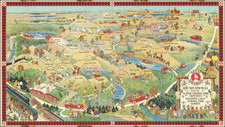
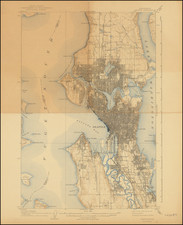
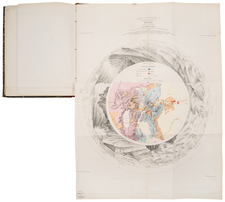
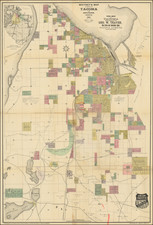
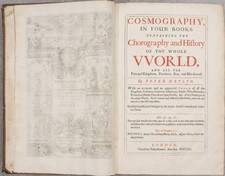
![[ North Fork Snoqualmie River -- Calligan Lake ] Township No. 25 North, Range No. 9 East.](https://storage.googleapis.com/raremaps/img/small/101663.jpg)